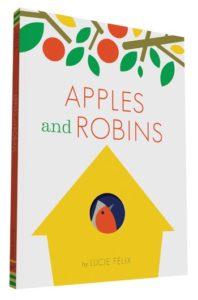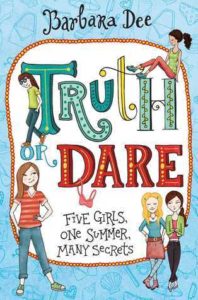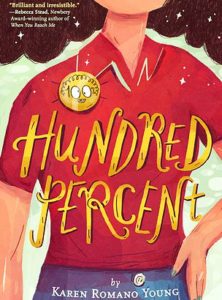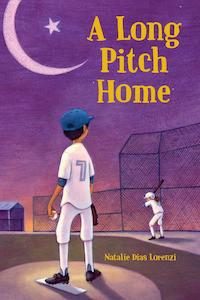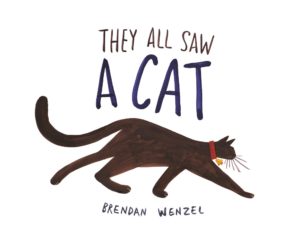
Katherine Koller
As a long-time member of several mother-daughter book clubs, Katherine Koller knows that girls tend to be honest with their opinions about what they read. That’s why she wanted her book club members to read her manuscript for a novel she was working on, Art Lessons. Here, she talks about the experience and how it affected her final copy. You may also be interested in reading this interview with the author in the Edmonton Journal.
Art Lessons With My Mother-Daughter Book Club, by Katherine Koller.
I asked my mother-daughter book club to be my focus group for my novel manuscript, Art Lessons. I gave each of our eight mother-daughter pairs a bound photocopy and asked them to write all over it, with any questions or comments of any kind. At the meeting, I was nervous, even though I’d been writing professionally for the last twenty years! But these were my book club girls and moms. We’d been through six whole years of reading excellent books. This was my third mother-daughter book club, with my sixth daughter. But Art Lessons was my first novel.
In our book club format, questions travel around the circle, so everyone gets a chance to answer. I took notes. Lots and lots of notes. The girls and moms offered differing opinions, the same as all our past discussions. I listened carefully to the requests from girls to know more about any one character, and made sure to expand when I went back to rewrite. Girls asked about the characters; moms tended to question details, like how to pronouce Babci (Bab-chi), a Polish word for grandma. Both groups liked the lists in the book.
Because my main character Cassie grows from 7 to 18, her voice changes. The girls loved that they sometimes knew more than Cassie, especially when she’s younger than them. One mom said, “like nothing I’ve read before,” and another described the novel as a “portrait of the artist as a young girl in layers.” Everyone “could see” Cassie’s drawings from her descriptions.
From our book club discussion, I decided that Art Lessons appealed to both teens and adults.
Some questions for discussion about Art Lessons:
- How does Cassie’s Polish grandmother, Babci, influence Cassie’s art?
- Have you ever felt like Cassie when she’s “floating”? How and when?
- Which of Cassie’s unlikely “teachers” did you like best? Why?
- How would you feel if you, like Cassie, were sent away for a whole summer?
- Which of Cassie’s drawings do you like the most, and why?
I wrote the book to show the development of a girl as an artist, how she observes the world and transforms it to art, how it affects others and herself. I have six daughters, all who are artists in their own way: musician, painter, designer, dancer, singer, photographer. I’ve dedicated the novel to them!
From Mother Daughter Book Club.com
Here is more information about Koller that you may want to know:
Art Lessons is published as crossover fiction for 14 and up and adult audiences by Great Plains Publishing (www.greatplains.mb.ca). Hear Katherine read a chapter, “Tree Day” from Art Lessons at www.katherinekoller.ca
Katherine Koller writes for stage, screen and page. Her trilogy of landwork plays, about industry and Alberta families, includes Last Chance Leduc (2015); The Seed Savers (2009); and Coal Valley: the Making of a Miner (2005). Voices of the Land: The Seed Savers and Other Plays was published in 2012. Her first novel, Art Lessons, about a girl who is transformed by her visual art, will be published by Great Plains Publishing in fall 2016. Katherine recently participated in a Writers Guild of Alberta mentorship on a collection of stories, The Lost Art of Second Chances. Her six-part web documentary on Edmonton youth changing their world, Sustainable Me, is online at www.sustainablemeyeg.ca. Besides writing opera and ballet libretti, Katherine is co-producer of Script Salon, a monthly play reading series, now over two years old, in Edmonton. She is currently working on Madonna of the Wilderness, an opera libretto; plays, Riverkeeper and Hope Soup; and a new novel, Sunflower Season. Katherine’s website is www.katherinekoller.ca
Save
Save
Save

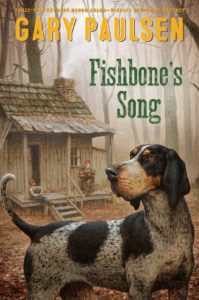 Fishbone tells three stories about how the boy came to live with him in the woods, but the boy doesn’t know which is true. Maybe they’re all true. He only knows Fishbone is old, and he’s got a way of explaining things that makes you listen up and think long about what he’s saying. The boy tried living away from Fishbone for a while so he could go to school, but it didn’t last. Now he knows he’s learning skills that will help him prepare for the day that his old guardian passes on.
Fishbone tells three stories about how the boy came to live with him in the woods, but the boy doesn’t know which is true. Maybe they’re all true. He only knows Fishbone is old, and he’s got a way of explaining things that makes you listen up and think long about what he’s saying. The boy tried living away from Fishbone for a while so he could go to school, but it didn’t last. Now he knows he’s learning skills that will help him prepare for the day that his old guardian passes on.
